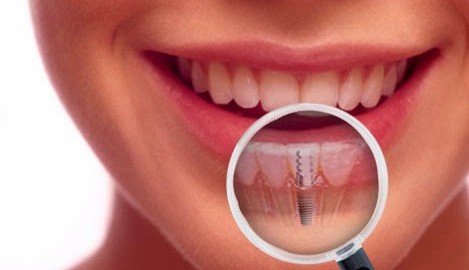 Undoubtedly, the field of implantology is incredibly complex – not only in terms of the skills and knowledge a dentist must possess, but also from the view point of selecting the right materials for the treatment. "Implant prosthetics" involves a whole lot more than just the implant components - choosing the right auxiliary consumable products and having the right tools from the start makes a world of difference and ensuring good consistent clinical outcomes. So, here are 4 important considerations that will determine the final outcome of your implant treatment.
Undoubtedly, the field of implantology is incredibly complex – not only in terms of the skills and knowledge a dentist must possess, but also from the view point of selecting the right materials for the treatment. "Implant prosthetics" involves a whole lot more than just the implant components - choosing the right auxiliary consumable products and having the right tools from the start makes a world of difference and ensuring good consistent clinical outcomes. So, here are 4 important considerations that will determine the final outcome of your implant treatment.
1. Impression Materials Used Affect the Accuracy of the Final Implant Restoration
Similar to that of crown and bridge work, implant impressions have certain elements that must be captured, or the accuracy of the final restoration is compromised. The practitioner should always choose an impression material that accurately represents the tissue contours and the connection of the abutment to the implant.
Such material requires excellent flow, high tear strength, and dimensional stability.
Honigum-Heavy is particularly suited for precision implant impressions. Thanks to the DMG patented rheologically active matrix, Honigum-Heavy combines optimal stability and excellent flow characteristics. Initially, the materials flow well around the impression posts and transfers copings and then stays reliably at application point. In addition, Honigum-Heavy exhibits a particularly high final hardness, thus guaranteeing a secure fixation of impression posts and transfer copings and preventing torsions. Due to these extraordinary material properties, Honigum-Heavy is recommended specifically for implantology applications by none less the noted Branemark Centre. For combination treatments including implants and restorations we recommend using the double mixing technique with Honigum-Heavy and Honigum-Light.
For implant only treatments Honigum-Heavy can also be used as monophase impression material.
To find out more about Honigum click here: https://www.dmg-dental.com/products/impression/impression-material/honigum/
2. Plan Ahead & Avoid Early Failures
In highly visible areas of the mouth, it is sometimes possible to place a crown on an implant the same day so that the person doesn’t have to leave the dental office with a noticeable gap in his/her smile. This is called “immediate provisionalization with no loading.” The key is not to stress the implant while the integration process is taking place. Subjecting an implant even to gentle biting forces (i.e., “loading” it) too early can disrupt the healing process of osseo-integration, causing it to fail. On the day the implant is placed, a provisional (temporary) crown is also placed, but it is kept completely free of the bite — meaning it is not quite long enough to touch the teeth directly opposite in the other jaw. Essentially, the temporary crown is there just for social (cosmetic) reasons. That’s because the osseo-integration process needs time to complete — generally two to three months, but up to six months depending upon bone quality, quantity and, importantly, the surgeon’s experience and assessment.For years, Luxatemp has been the material of choice for perfectly fitting temporary crowns and bridges worldwide. With the new Luxatemp Star, DMG has now made the best even better*!
Luxatemp Star impresses with outstanding flexural strength and break resistance ratings and an improved initial hardness thus making temporary restorations stronger and more stable than ever before. The dauntless bite into a candied apple is no longer a toughness test, neither for the material nor for the relationship between the dentist and the patient. And, of course, somethingthat lasts should also look good for the duration. Luxatemp Star’s exceptional long-term color stability ensures that. Another plus: the material now reaches its final hardness even faster.
Luxatemp has always been lauded for its highest aesthetics and excellent workability. Complementary to Luxatemp Star, DMG offers a wide range of other premium products for temporary care – from glaze to cement.
To find out more about Luxatemp Star click here: https://www.dmg-dental.com/products/temporary-care/fabrication-of-temporaries/luxatemp/
3. Scaling On Patients With Implants
The plaque and calculus that forms on most implants is of a different consistency than on the teeth. It is usually more readily removed and hence, responds differently to scaling.However, stainless steel curettes should not be used on implants as it can risk scratching the titanium metal of the implant - which then results in more plaque and calculus accumulation.
Fabricated from reinforced graphite and designed to avoid that very risk of scratching implant surfaces, the Premier Implant Scalers feature sharp tips with defined edges. They are strong but flexible enough to reach tight areas and feature textured grips for clinician comfort.
On top of that, the Premier Implant Scalers are autoclavable and available in packs of 2 or 5 instruments.
To find out more about Implant Scalers click here: http://www.premusa.com/?s=implant+scaler&lang=en
4. Using Safe Probes Around Dental Implants
It is recommended that implants not be probed with metal probes because of injury to the junctional epithelium and the risk of scratching the surface of the implant or abutment thus making them more plaque retentive and prone to peri-implantitis. With modern restorative dentistry, an examiner may not know whether an implant or tooth is being probed. PerioWise probes are thrice patented for their flexible tip, tip design and colour-coding, and were named "The Friendly Probe"® because they are indeed user and patient friendly.
By always using PerioWise probes you never have to be concerned about damaging implants. Here's an example.
To find out more about PerioWise click here: http://www.periowise.com/denhyg.htm The realm of implant restorations is definitely no simple feat. It takes careful planning and forward thinking to ensure good consistent clinical outcomes for your patients. Establishing an efficient protocol and having the right tools from the beginning of your treatment will help in delivering a predictable result.
.png)
